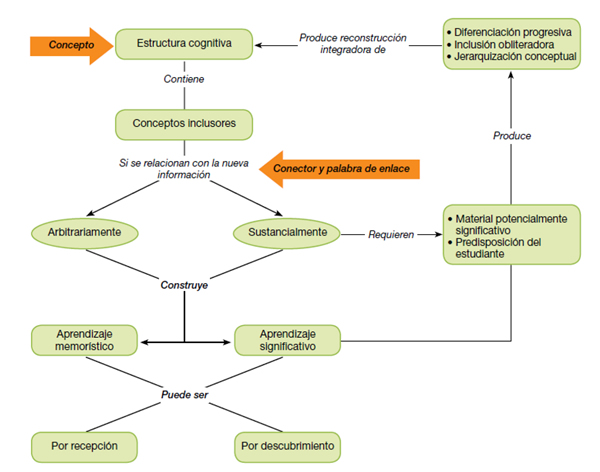
doi.org/10.15198/seeci.2019.50.27-42
RESEARCH
MULTIMEDIA CONCEPTUAL REPRESENTATIONS OF WORK AREAS IN SOCIAL EDUCATION PREPARED BY UNIVERSITY STUDENTS (2015-2018)
REPRESENTACIONES CONCEPTUALES MULTIMEDIA DE LOS ÁMBITOS DE ACTUACIÓN EN EDUCACIÓN SOCIAL ELABORADOS POR ESTUDIANTES UNIVERSITARIOS (2015-2018)
REPRESENTAÇÕES CONCEITUAIS MULTIMIDIA DOS ÂMBITOS DE ATUAÇÃO EM EDUCAÇÃO SOCIAL ELABORADOS POR ESTUDANTES UNIVERSITÁRIOS (2015-2018)
Eloy López Meneses1
Esteban Vázquez Cano2
Esther Fernández Márquez3
Jesús López Belmonte4
1Eloy López Meneses. Pablo de Olavide University. Spain
elopmen@upo.es
2Esteban Vázquez Cano. National University of Distance Education. Spain.
evazquez@edu.uned.es
3Esther Fernández Márquez. Pablo de Olavide University. Spain
efermar2@upo.es
4Jesús López Belmonte. International University of Valencia. Spain.
jesus.lopezb@campusviu.es
This piece of research arises from the guideline set by the Teaching Innovation 2.0 project with Information and Communication Technologies in the European Higher Education Area, developed within the framework of the Teaching Innovation and Development Projects of the Pablo de Olavide University (UPO), funded by the Vice-Rectorate for Teaching and European Convergence of said University.
ABSTRACT
The present study arises from the Teaching Innovation 2.0 project with Information and Communication Technologies in the European Higher Education Area, developed within the framework of the Innovation and Teaching Development Projects of the Pablo de Olavide University (UPO), financed by the Vice-rectorate of Teaching and European Convergence. The research describes a diachronic study on the conceptions of the specific fields of work in Social Education through the elaboration of multimedia conceptual maps. An innovative planning is carried out and it is developed with 266 students from the courses of Degree of Social Education and Double Degree of Social Education and Social Work of the Pablo de Olavide University, during the academic years 2015/16, 2016/17 and 2017/2018. Through a qualitative methodology, with virtual and quantitative ethnography techniques, the intervention areas in Social Education and Social Work were analyzed with the following results: people with disabilities and mental health (15.37%), drug dependence (14.70%), third age (14.03%), adults (11.25%), childhood (9.47%), immigration (8.35%), sociocultural animation (7.57%), gender violence (6.12%) and adolescence (4.34%).
KEY WORDS: higher education, online learning, virtual teaching strategy, multimedia conceptual map, educational innovation, training for university teaching, on-line resources
RESUMEN
El presente estudio emana del proyecto Innovación docente 2.0 con Tecnologías de la Información y la Comunicación en el Espacio Europeo de Educación Superior, desarrollado en el marco de los Proyectos de Innovación y Desarrollo Docente de la Universidad Pablo de Olavide (UPO), financiado por el Vicerrectorado de Docencia y Convergencia Europea de dicha Universidad. La investigación describe un estudio diacrónico sobre las concepciones acerca de los ámbitos propios de la Educación Social mediante la elaboración de mapas conceptuales multimedia. El desarrollo de la misma plantea un carácter innovador y se desarrolla con 266 estudiantes pertenecientes a los cursos de Grado de Educación Social y Doble Grado de Educación Social y Trabajo Social de la Universidad Pablo de Olavide, durante los cursos académicos 2015/16, 2016/17 y 2017/2018. A través de una metodología cualitativa, mediante técnicas de etnografía virtual y cuantitativa, se analizaron los ámbitos de intervención en Educación Social y Trabajo Social con los siguientes resultados: personas con discapacidad y salud mental (15,37%), drogodependencia (14,70%), tercera edad (14,03%), adultos (11,25%), infancia (9,47%), inmigración (8,35%), animación sociocultural (7,57%), violencia de género (6,12%) y adolescencia (4,34%).
PALABRAS CLAVE: educación superior, aprendizaje en red, estrategia de enseñanza virtual ,mapa conceptual multimedia, innovación educativa, formación para la docencia universitaria, recursos en línea
RESUME
O presente estudo emana do projeto Innovacion docente 2.0 con Tecnologias de la Informacion y la Comunicacion en el Espacio Europeo de Educacion Superior, desenvolvido no marco dos Projetos de Inovação e Desenvolvimento Docente da Universidade Pablo de Olavide (U.P.O.), financiado pelo Vice-Reitorado de Docência e Convergência Europeia desta universidade. A investigação descreve um estudo diacrônico sobre as concepções sobre os âmbitos próprios da Educação Social mediante a elaboração de mapas conceptuais multimídia. O desenvolvimento da mesma propõe um caráter inovador e se desenvolve com 266 estudantes pertencentes aos cursos universitários de Educação Social e Trabalho Social da U.P.O., durante os cursos acadêmicos 2015/16, 2016/17 e 2017/18. Através de uma metodologia qualitativa, mediante técnicas de etnografia virtual e quantitativa, se analisaram os âmbitos de intervenção em Educação Social e Trabalho Social com os seguintes resultados: pessoas com incapacidade e saúde mental (15,37%), toxicômanos (14,70%), terceira idade (14,03%), adultos (11,25%), infância (9,47%), imigração (8,35%), animação sociocultural (7,57%), violência de gênero (6,12%) e adolescência (4,34%).
PALAVRAS CHAVE: educação superior, aprendizagem em rede, estratégia de ensino virtual, mapa conceitual multimídia, inovação educativa, formação para docência universitária, recursos online
How to cite the article: López Meneses, E.; Vázquez Cano, E.; Fernández Márquez, E. & López Belmonte, J. (2019). Multimedia conceptual representations of work areas in social education prepared by university students (2015-2018). [Representaciones conceptuales multimedia de los ámbitos de actuación en educación social elaborados por estudiantes universitarios (2015-2018)]. Revista de Comunicación de la SEECI, (50), 27-42. doi: http://doi.org/10.15198/seeci.2019.50.27-42
Recovered from http://www.seeci.net/revista/index.php/seeci/article/view/570
Received: 15/02/2019
Accepted: 17/09/2019
Published: 15/11/2019
1. INTRODUCTION
The concept of education requires a reconceptualization, by teachers and students, in the face of the challenges of the digital revolution in communicative terms, which directly impact educational processes (Rodríguez-García, 2017). In this sense, in the university context, an oriented, methodological and evaluative change is necessary to enhance the integral training of students through the development of their social, intellectual and technological competences (Aguaded, López-Meneses & Jaén, 2013). In this sense, multimedia conceptual maps can be relevant curricular elements in the processes of methodological innovation and in the development of metacognitive strategies (Fernández-Márquez, Vázquez-Cano & López Meneses, 2016; López Meneses, Vázquez-Cano & Jaén Martínez, 2017).
Novak and Cañas (2008) indicate that a conceptual map is a tool for hierarchical organization of concepts (perceived regularities in events or objects, or records of events or objects, designated by labels) and of determining relationships between these concepts, which constitute coherent semantic units or propositions (sentences that allow a self-sufficient description of an object or event contained in the universe of study). And they are used for the generation, visualization, structure, and taxonomic classification of ideas, and as internal help for the study, organization, decision making and problem solving (Ortega-Jiménez, 2016). In turn, in agreement with different authors (Valdés, Menéndez & Valdés, 2006; Kinchin, Streatfield & Hay, 2010; Muñoz-González & Ontoria, 2014; Muñoz, Ariza & Sampedro, 2015), conceptual maps can help us organize, represent and store our knowledge.
The creation of mind maps relies on the use of different elements, such as images or iconic images loaded with semantic value, color codes, different types and sizes of letter, etc., in order to create a mental model capable of explaining the relationships between different levels of information about a concept or topic (Villalustre-Martínez & Del Moral-Pérez, 2010; Vázquez-Cano, López Meneses & Sánchez-Serrano, 2015; Vázquez-Cano, López Meneses & Jaén Martínez, 2017). Also, Novak (2000) indicates the main elements that make up a conceptual map:
Concept. Concept is understood as the word or term that manifests regularity in the facts, events, ideas and / or qualities.
Proposition. It is established from the union of two or more concepts linked by linking words in a semantic unit. It corresponds to the main unit of meaning.
Linking words. They are words that unite the concepts and indicate the types of relationship between them.
Image 1 shows the main structure and element of a multimedia conceptual map (MCM).
Source: Self-made based on Maglione and Varlotta (2011).

Image 1: Structure and elements of multimedia conceptual maps.
Also, according to Novak (2010), a conceptual map is useful in teaching to organize the contents dealt with during a didactic unit, it is a means to visualize concepts and hierarchical relationships between known concepts.
1.1. Research scenario
This piece of research describes a diachronic study on conceptions about the fields of Social Education through the elaboration of multimedia conceptual maps. Its development has an innovative character and is developed with 266 students belonging to the Social Education and Double Degree in Social Education and Social Work courses in Pablo de Olavide University, during the 2015/16, 2016/2017 and 2017/2018 academic years.
The experience was based on presenting to students an introspective reflection through multimedia conceptual maps (MCM) on the fields of action of Social Education professionals, which were to be expressed with Mindomo application (http://www.mindomo.com), which makes it possible to design conceptual maps (Mind Maps) in a dynamic and easy way based on the concepts that are indicated. Subsequently, they sent the MCM link with a brief comment to the email and sent them as comments to the edublog
(http://mapasconceptualesestudiantes.blogspot.com.es/) (Image 2).
Source: http://mapasconceptualesestudiantes.blogspot.com/
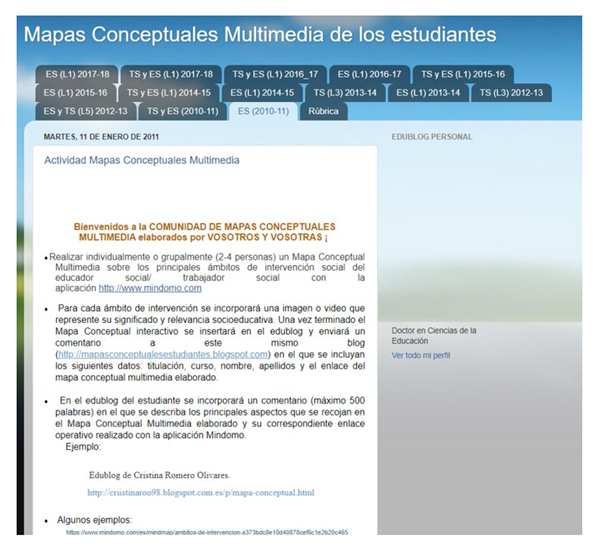
Image 2: Virtual space of the innovative university experience.
Finally, each student had to prepare a personal edublog for the subject on the evidence of the activities carried out, one of their tabs being the Conceptual Maps or a similar title where they should add a comment (maximum 500 words) in which they describe both the structure and the main aspects that are included in the Multimedia Conceptual Map and its respective link made with Mindomo application (Image 3).
Source: https://rvm3000.blogspot.com.es/
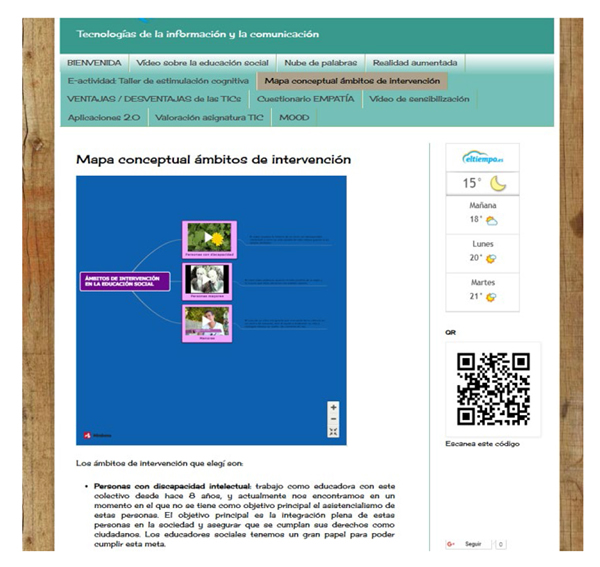
Image 3: Edublog of a Social Education student of the 1st Social Education Degree Course. 2017-18 Academic year.
Below, we show the didactic intentions, the development of research and the most relevant results achieved during the development of this study.
2. OBJECTIVES
This diachronic study is based on the following educational intentions.
3. METHODOLOGY
Regarding the methodology we used, let us note that it was qualitative and descriptive. For the analysis, the 266 contributions made by the students were reviewed by analyzing the words or sets of meanings as registration units. Subsequently, the conceptual plot was categorized based on the guidelines established by different authors (Bogdan & Biklen, 1992; Miles & Huberman, 1994):
Source: Self-made.
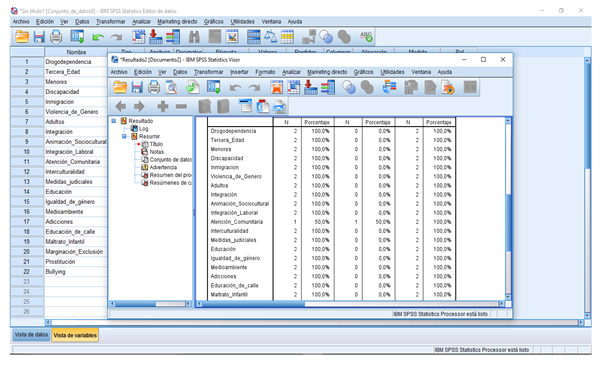
Image 4: Categorical analysis prepared with IBM SPSS Statistics 20.0.
4. RESULTS
In this section we show the results obtained from two different analyzes: the MCM and the fields of action in Social Education.
4.1. MCM: How students represent their knowledge
In accordance in the first instance with the results obtained after the codification and interpretation of the information extracted from the MCMs made by the students, it should be noted that, in the form students organize and express contents, hierarchical structuring stands out mainly and mostly, which prevails significantly (around 70%), over spider structuring (30%) as shown in Graph 1.
Source: Self-made.
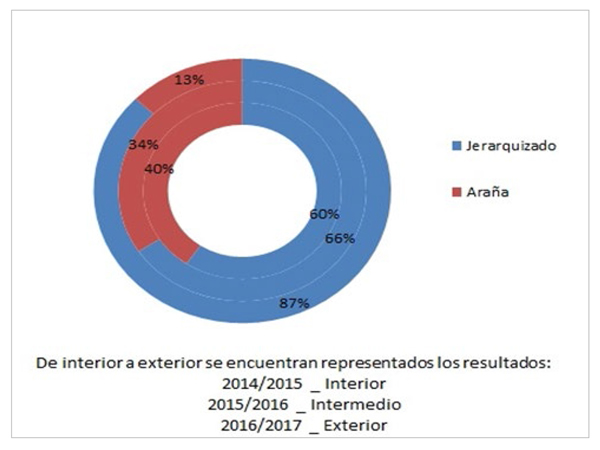
Graph 1: Structuring the graphical representation in the MCM.
Also, it is noteworthy that, during the analysis and categorization of the contributions, it is observed that the students who opt for a spider representation have not well integrated what conceptual maps really consist in, since they do not use (in no case) linking words or connections between the concepts of secondary levels .
Of those who opt for a hierarchical presentation, we observe how vertical representations prevail over horizontality (60%-40%), a greater differentiation in the last academic years being found, a change in trend in the last academic year (Graph 2) being detected.
Source: Self-made.
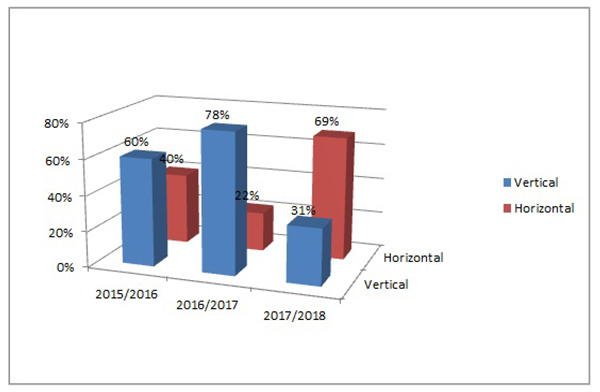
Graph 2: Modality of hierarchization of the MCM.
4.2. Conceptions of the students on what the fields of action in Social Education are
Focusing, on the other hand, on the analysis of the areas of action indicated by the students as a whole, it should be noted that they have established an average of 3.4 own concepts associated with the main areas of social intervention of the social educator.
Based on their contributions, inadequate conceptual delimitation is denoted, population sectors that benefit from the actions (childhood, youth, senior citizens, homeless people, immigrants...) being mixed with areas of action (socio-cultural animation, drug addiction, gender violence, prostitution, prison, socio-community care...).
Apart from this aspect, we obtain the following table of response frequencies (Table 1):
Table 1. Frequency of responses on the areas of intervention in Social Education.
Frequency of responses on the areas of intervention in Social Education.
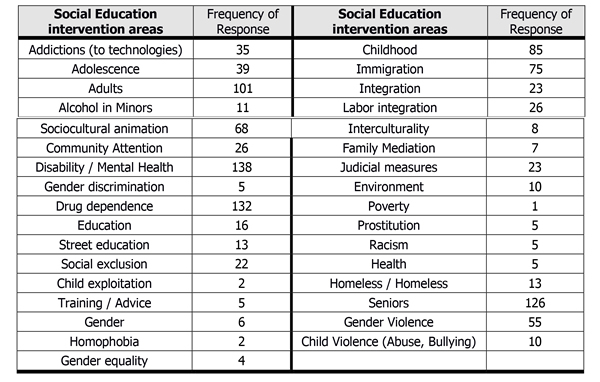
Source: Self-made.
Analyzing percentages, we show in graph 3 the most outstanding ones, they are: people with mental disabilities and health (15.37%), drug dependence (14.70%), senior citizens (14.03%), adults (11.25%), childhood (9.47%), immigration (8.35%), socio-cultural animation (7.57%), gender violence (6.12%) and adolescence (4.34%).
Source: Self-made.
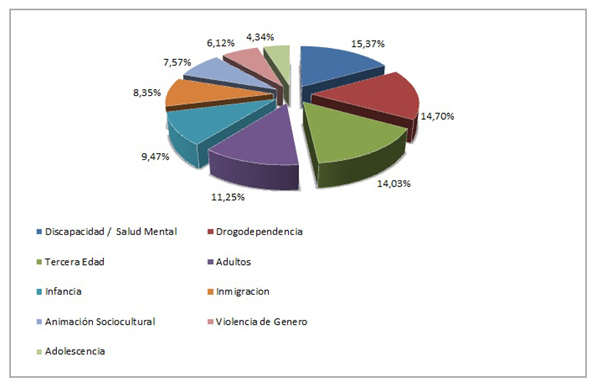
Graph 3: Main areas of action in Social Education.
Based on the diachronic analysis between the 2015/2016, 2016/2017 and 2017/2018 academic years, (Graph 4), a progression and emergence of new concepts between conceptions or how other aspects have ceased to be important are inferred.
Source: Self-made.
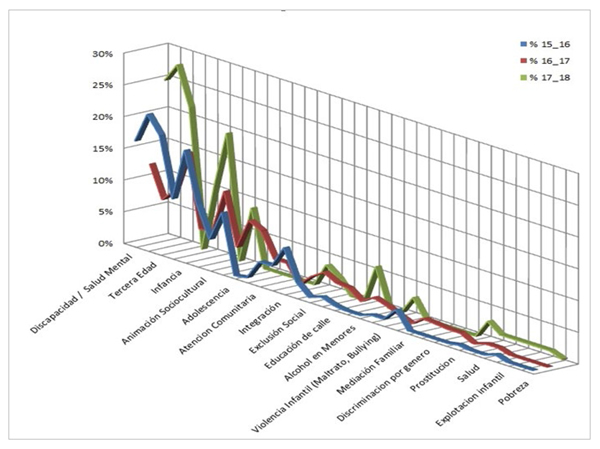
Graph 4: Comparison of the Social Education intervention areas. Diachronic analysis.
5. DISCUSSION AND CONCLUSIONS
In the first instance, it is inferred in accordance with Reyes-Santander, P. A. and Ramos-Rodríguez (2018) that the generation of maps poses initial difficulties for students and is even more complex when they are invited to express and communicate it. However, throughout the experience, it is corroborated with Valverde-Berrocoso and Garrido-Arroyo (2002) that this type of didactic visual-learning technique helps students in the process of acquiring and retaining new information by establishing connections between new and existing knowledge.
With respect to the areas of intervention of this study, they are similar to other research studies (Kearney et al. 2000; British Association of Social Workers, 2002; Cunningham, 2004): social services, gender violence, immigration or homeless people.
Also, about this experience using edublog and MCM, as authors such as O’Donnell (2006), Farmer, Yue and Brooks (2008), Cabero, Ballesteros and López-Meneses (2015) point out, it is worth highlighting the good assessment that our students make of Mindomo software and blogs as easy-to-use, collaborative, intuitive and very useful applications with the possibility of adding images, comments, links, graphics and videos of all kinds and disseminating them through the Internet. That is, they make it possible to corroborate how the use of applications related to social software is an appropriate and useful practice so that students can play an active role in their training process and put into practice higher order learning skills.
Finally, in the same discursive line of Pontes (2014), it is necessary to highlight the fact that this type of maps, used in these types of training activities, oblige those who carry them out to reflect on their own knowledge and help to visualize the deficiencies of the process of learning any subject at any given time.
With reference to the lines of the future, it is verified that didactic studies of this type make it possible to explore, reason and analyze the curricular contents of subjects and, in turn, they are optimal metacognitive methodological instruments for the enrichment of students’ competence. In this line of research, currently, from the research group Eduinnovagogía® (HUM-971) URL http://bit.ly/1sGHwqO we are studying its feasibility to develop it in other Latin American educational institutions.
REFERENCES
AUTHORS
Eloy López Meneses: Associate Professor in the Department of Education and Social Psychology at the University Pablo de Olavide (Sevilla, Spain). Doctor of Education Sciences and extraordinary doctoral thesis prize from the University of Seville. Specialized in MOOC, ICT and didactic design MEM. Director of the EduInnovagogía Research Group (HUM-971). Editor of the International Magazine: “International Journal of Educational Research and Innovation” (IJERI). Research lines: University MOOC, Augmented/Virtual Reality, ICT in formative contexts, design and implementation of Multimedia Educational Materials (MEM) and educator training in emerging technologies.
elopmen@upo.es
Orcid ID: http://orcid.org/0000-0003-0741-5367
Esteban Vázquez-Cano: Professor of the Faculty of Education in the Department of Didactics, School Organization and Special Teaching. Doctor of Education Sciences with Extraordinary Prize. He currently directs the Master’s Degree in Educational Inspection and Supervision at the UNED and his priority research lines are School Organization and Supervision, Mobile-ubiquitous Learning, Digital Language and Massive Online Open Courses (MOOC), topics on which has published more than 200 scientific contributions (Google Scholar, Scopus).
evazquez@edu.uned.es
Orcid ID: https://orcid.org/0000-0002-6694-7948
Esther Fernández Márquez: Professor at the Pablo de Olavide University. Doctor in Education and Communication at the University of Malaga. Member of the Eduinnovagogía research group (HUM-971). Research line: Teacher training in digital skills and innovation in emerging technologies.
efermar2@upo.es
Orcid ID: https://orcid.org/0000-0003-0111-2533
Jesús López Belmonte: Doctor of Education Sciences from the University of Granada (Spain). He has an official University Master’s Degree in Educational Technology and Digital Competences from the International University of La Rioja. He teaches at the International University of Valencia, within the Secondary Master under the direction of TFM and at the Beatriz de Silva Concerted Center, in the Autonomous City of Ceuta (Spain). He develops his research work in the AREA HUM-672 Research Group (Analysis of the EducativA Reality).
jesus.lopezb@campusviu.es
Orcid ID: https://orcid.org/0000-0003-0823-3370